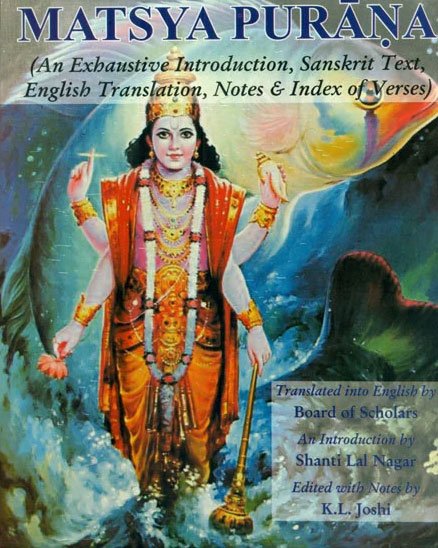The Matsya Purana (critical study)
by Kushal Kalita | 2018 | 74,766 words | ISBN-13: 9788171103058
This page relates ‘Ashtangayoga (eightfold path of discipline)’ of the English study on the Matsya-purana: a Sanskrit text preserving ancient Indian traditions and legends written in over 14,000 metrical verses. In this study, the background and content of the Matsyapurana is outlined against the cultural history of ancient India in terms of religion, politics, geography and architectural aspects. It shows how the encyclopedic character causes the text to deal with almost all the aspects of human civilization.
Part 4.1 - The Aṣṭāṅgayoga (eightfold path of discipline)
The Sāṃkhya-Yoga systems hold that for attaining liberation, the mind must be purged of all its impurities and must become calm and serve. Control over body, the senses and mind is the principles means by which one can attain perfection. The Yoga philosophy stresses that the restraint of the mental modifications can be brought about by practice and conquest of desire.[1]
For the purification and conquire of citta the Yoga philosophy has prescribed eightfold path of discipline.
These are:
- yama (restraint),
- niyama (culture),
- āsana (posture),
- prāṇāyāma (breath-control),
- pratyāhāra (withdrawal of senses),
- dhāraṇa (contemplation),
- dhyāna (meditation) and
- samādhi (concentration).[2]
(1) Yama consists in:
- ahiṃsā (non-violence),
- satya (truthfulness),
- asteya (nonstealing),
- brahmacārya (control of passions and lust) and
- aparigraha (non-acceptance of gifts).
(2) The second discipline, i.e., niyama consists in:
- the cultivation of purification (śauca),
- contentment (santoṣa),
- austerity (tapas),
- study (svādhyāya) and
- devotion to god (īśvarapraṇidhāna).
(3) The third discipline āsana which means steady and comfortable posture.
(4) Prāṇāyāma is the control of breath. Regulation of inhalation, retention and exhalation of breath is done in it.
(5) Then comes pratyāhāra, which is the control of senses and consists in withdrawing of sense from their objects.
(6) Dhāraṇa means fixing the mind on the object of meditation.
(7) Dhyāna is the steadfast contemplation of the object.
(8) The last stage is samādhi. It is the goal. It is the state in which the mind completely absorbed in the object of meditation.
According to Yoga philosophy, samādhi is of two types, viz.,
- saṃprajñātā (conscious) and
- asaṃprajñātā (supra conscious).[3]
Footnotes and references:
[1]:
Yogasūtra, 1.12
[2]:
, 2.29
[3]:
Cf. Yogasūtra, 2.30, 32-55, 3.1-1
